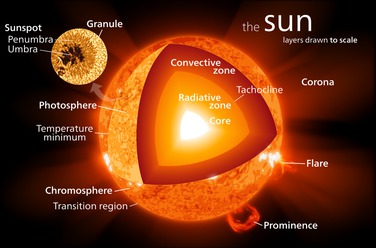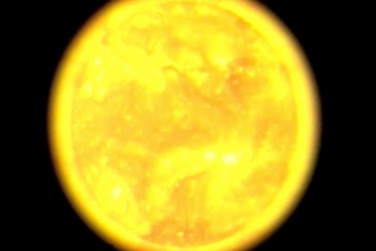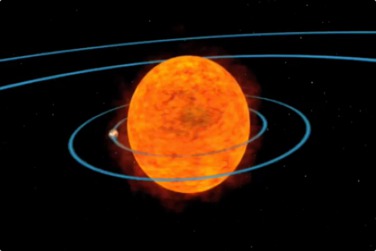Want to cook up a star like the one keeping you warm right now?
Mix three parts hydrogen to one part helium and add a tiny trace of other elements for spice.
And put it together a bit like a layer cake with three layers of frosting: the photosphere, the chromosphere, and finally—the outermost layer—the corona. The corona and the chromosphere are transparent to visual light, so almost all of the light that we see comes from the photosphere, which has a surface temperature of 5,500 degrees Celsius (9,900 Fahrenheit). The corona and the chromosphere can only be seen during a solar eclipse.
Deep inside the sun, conditions are much different. The interior temperature is a balmy 15 million degrees Celsius (27 million Fahrenheit) as nuclear fusion converts hydrogen to helium, powering the sun. We think of helium as a lightweight gas, but it's heavier than hydrogen and sinks down toward the sun's center.
The sun first ignited about 4.6 billion years ago. It burns about 3.6 million tonnes of hydrogen every second! But don't worry, it has enough gas to burn for another five billion years or so.
Eventually, as its fuel supply runs out, it will swell into a red giant and swallow Mercury, Venus, Earth, and Mars. It will likely boil off much of Jupiter's atmosphere and perhaps Saturn's too; and then, finally, shrink to become a white dwarf.


